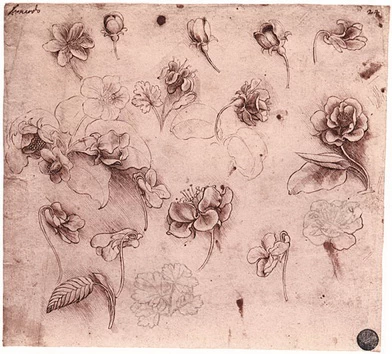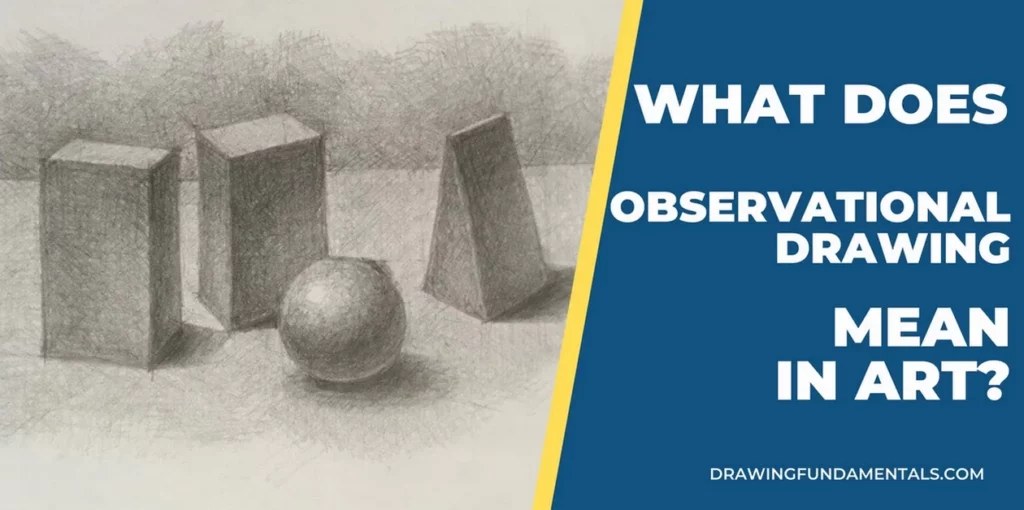In his excellent book The Eye Of The Painter, a well-known illustrator and author Andrew Loomis writes: “The best advice I can offer is to paint what you see as you see it.” The subject of an observational drawing can be anything from nature, as well as man-made objects.
Drawing by observation simply means that you look at the subjects directly in front of your eyes and depict them accurately. This does not mean that you have to draw every detail in a photorealistic way. It is much more important to portray the character and individuality of your subjects and models in a way that only you can see them. Feel free to use your creativity when drawing the observed things and incorporate your impressions of the subject.
The importance of observational drawing
Observational drawing is important because it improves hand-eye coordination, which is an important prerequisite for professional drawing. The better you become an observer, the more accurately and quickly you will be able to make drawings and sketches.
By drawing and sketching from life, artists develop their ability to look attentively at the things to be drawn. Through observational drawing, you gain valuable knowledge that enables you to draw any subject, even complex ones, accurately and convincingly. Frequent sketching will train your eyes for good observation.

A portable sketchbook helps you to draw the observed subjects anytime, anywhere. You can later use these observed and documented things as references in the creation of your artwork. As your observation skills improve, it will become easier to notice when something is off in your drawing.
What is important to observe when drawing from life?
1. Decide what is important and what isn’t
It is important to learn to see the subject you want to draw as a unified whole and not get lost in the details. When drawing from life, especially outdoors, we usually see more details than we need for a good artistic composition.
Observational drawing helps us to learn to choose and emphasize the center of interest in our drawings, as well as the aspects that are important in the representation of our subject.
Avoid overdrawing, simplify the less important elements as much as possible, and completely eliminate what is unimportant. A simplified drawing can be more interesting and expressive than a photorealistic one.
2. Observation of spatial position and proportions
For more complex drawings, it is important to observe the relative spatial position, proportions, and angles of the objects. To do this, we need to know the methods of spatial representation, such as linear and aerial perspective, overlapping, and foreshortening.
A sighting stick can help you determine proportions, angles, and dimensions. You can use a chopstick or a pencil for this purpose. You can learn more about the sighting technique and spatial representation in my article on drawing tips for beginners.
Don’t just see and draw the subjects as outlines, but consider them as spatial solids. All observed objects can be simplified to one of the basic geometric solids, which helps in their accurate spatial representation.
3. Observing and drawing human models
When drawing the people around you, it is important to observe their posture and gestures, rather than the small details of their appearance. Observing and depicting gestures will help you draw interesting and expressive human figures. Using a mirror, you can also observe and sketch yourself.
When drawing people from observation, their body language, facial expressions, and reactions in different situations are important. For a realistic depiction of human figures and portraits, you will also need knowledge of artistic anatomy.
4. Observing light and shadow, textures, tonal values , and colors
When drawing from life, it is very important to observe light and shadow, as they are very important factors in the realistic representation of subjects. Notice the shape of objects, their edges, colors, tonal values, textures, and the mood of the scene. These factors are all interrelated and affect each other.
The same scene or object at different times of the day and under different light conditions will have a different mood, different color temperatures will dominate it, and the effects of light and shadow will also change. It is good practice to draw the given subject from several angles and under different lighting conditions.

Final thoughts
Observation is one of the most important skills of a draftsman, which you can develop with continuous practice, sketching, and drawing from life.
Close observation of the subjects will help improve your drawing accuracy and speed. It also develops hand-eye coordination.
By practicing observational drawing, you can learn to depict what is essential and leave out what is unnecessary in a good composition. Observational drawing does not mean that you have to create a photorealistic work.
By observing and depicting the shape of the subjects, their gestures, as well as light and shadow, tones and colors, your drawings will be convincing and expressive.
However, successful drawing also requires technical knowledge, which includes the principles of perspective, the effects of light and shadow, and artistic anatomy when depicting people or animals.

Debora
My name is Debora, and I’m the founder of Drawing Fundamentals. I work as a civil engineering technician. I acquired the basic knowledge necessary for freehand and technical drawing during my school training, further developing and perfecting these skills throughout my years in the profession. Through my blog, I aim to assist anyone interested in learning to draw.

